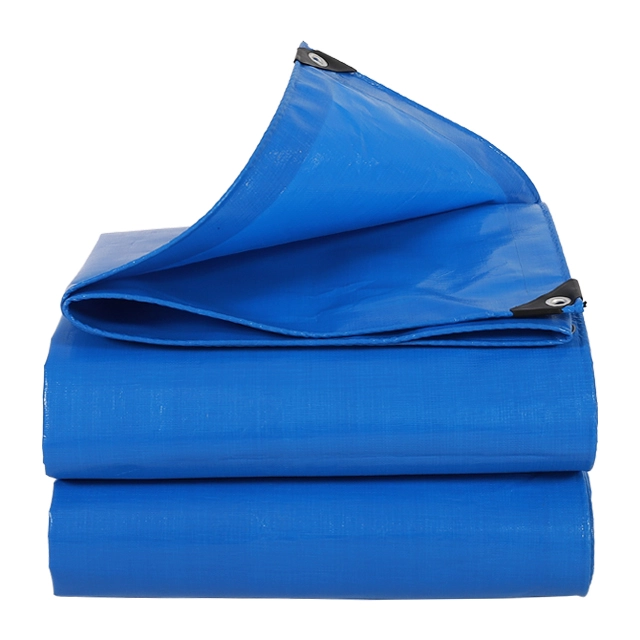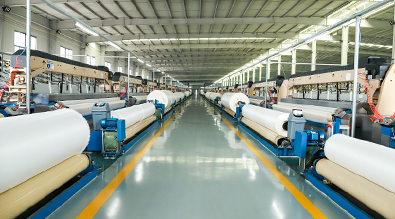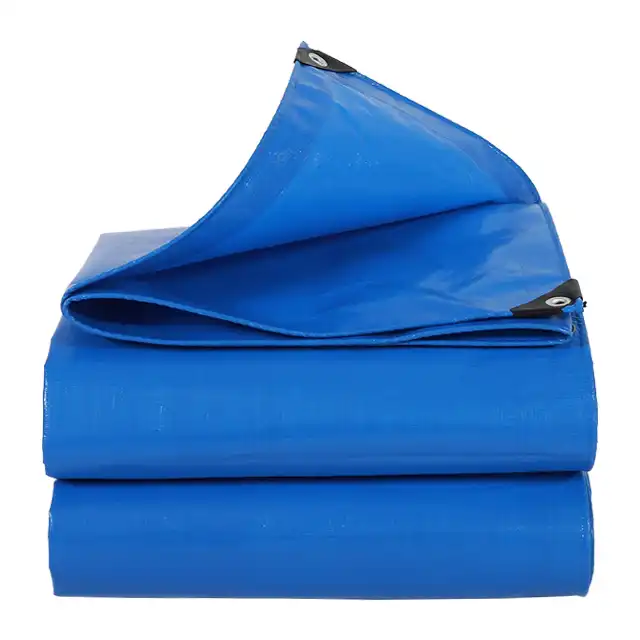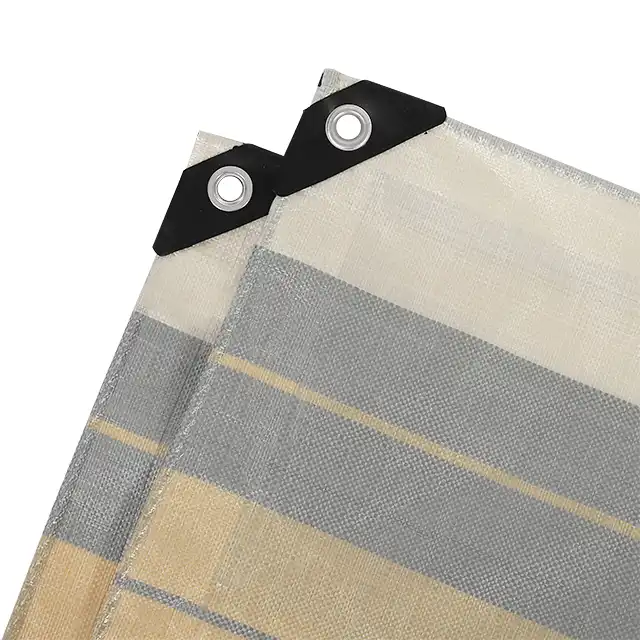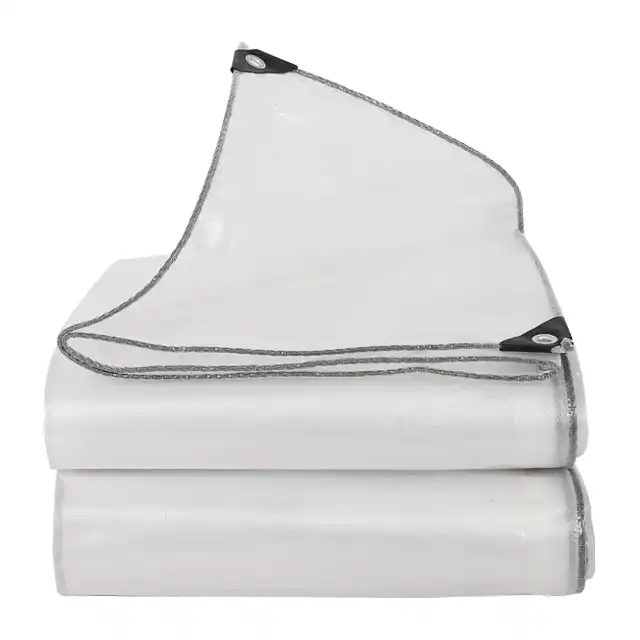What to Include in a Tarpaulin Product Specification Sheet?
When sourcing industrial materials or protective covers, a comprehensive tarpaulin product specification sheet serves as the cornerstone of informed decision-making. Whether you're a procurement manager, contractor, or distributor, understanding what constitutes a complete specification document can mean the difference between successful project execution and costly material failures. A well-structured tarpaulin specification sheet encompasses technical parameters, performance characteristics, application guidelines, and quality certifications that collectively define the product's suitability for specific use cases. This comprehensive guide explores the essential elements that should be included in every professional tarpaulin specification document to ensure transparency, quality assurance, and optimal product selection.
Essential Technical Specifications for Tarpaulin Products

Material Composition and Construction Details
The foundation of any reliable tarpaulin specification sheet begins with detailed material composition information. High-quality PE (polyethylene) tarpaulin products require precise documentation of the base material characteristics, including the specific grade of polyethylene used, density measurements, and molecular weight specifications. Professional manufacturers like those operating advanced facilities with over 200 water-jet looms understand that material composition directly impacts the final product's performance characteristics. The specification should clearly state whether the tarpaulin utilizes virgin PE materials or recycled content, as this significantly affects durability and weather resistance. Additionally, the document must include information about any additives incorporated during the manufacturing process, such as UV stabilizers, anti-oxidants, or color masterbatches that enhance the tarpaulin's performance in specific environmental conditions.
Dimensional Specifications and Tolerances
Accurate dimensional specifications form another critical component of comprehensive tarpaulin documentation. The specification sheet must detail available width ranges, with many industrial applications requiring widths from standard 1.5 meters up to ultra-wide 5-meter configurations without joints. Length specifications should indicate both standard sizes and custom manufacturing capabilities, as many applications require tailored dimensions. Thickness measurements, typically expressed in microns or mils, directly correlate with the tarpaulin's strength and durability characteristics. Professional specifications also include tolerance ranges for all dimensions, ensuring customers understand the acceptable variation limits. Weight specifications, expressed in grams per square meter (GSM), provide crucial information for load calculations and shipping considerations. Modern manufacturing facilities equipped with advanced coating machines can produce tarpaulin products ranging from lightweight 75 GSM options for temporary applications to heavy-duty 400 GSM variants for industrial use.
Mesh Structure and Weaving Specifications
The internal structure of woven tarpaulin products significantly influences their performance characteristics and must be thoroughly documented. Mesh count specifications, typically ranging from 6×6 to 16×16, indicate the number of threads per square inch and directly impact the material's strength and flexibility. Denier measurements, usually spanning from 600D to 1800D, specify the weight of the yarn used in the weaving process and serve as indicators of the tarpaulin's overall robustness. Professional manufacturers utilizing Korea-imported automatic water-jet looms can achieve consistent thread spacing and uniform tension throughout the fabric, resulting in superior performance characteristics. The specification should also detail the weaving pattern employed, whether plain weave, twill weave, or specialized patterns designed for specific applications. Thread treatment processes, including any stretching, heat-setting, or chemical treatments applied to enhance performance, must be clearly documented to provide complete transparency regarding the manufacturing process.
Performance Characteristics and Quality Standards
Waterproofing and Weather Resistance Properties
Comprehensive tarpaulin specifications must thoroughly document waterproofing capabilities and weather resistance characteristics. The waterproofing rating should specify the hydrostatic head measurement, indicating the water pressure the material can withstand before leakage occurs. Professional-grade tarpaulin products typically feature LDPE (Low-Density Polyethylene) lamination on both sides, creating a completely waterproof barrier essential for outdoor applications. UV treatment specifications are equally critical, detailing the level of ultraviolet protection incorporated into the material to prevent degradation from prolonged sun exposure. Manufacturers with strong research and development capabilities often develop enhanced UV treatments that significantly extend the tarpaulin's service life in harsh outdoor environments. Temperature resistance ranges must be specified, indicating both the maximum and minimum operating temperatures the material can withstand without compromising performance. Arctic flexibility features enable the tarpaulin to remain pliable in sub-zero conditions, while heat resistance ensures dimensional stability in high-temperature applications.
Strength and Durability Testing Results
Professional tarpaulin specifications should include comprehensive strength testing data derived from standardized testing protocols. Tensile strength measurements, typically expressed in pounds per inch or Newtons per centimeter, indicate the material's resistance to tearing under stress. Tear resistance specifications demonstrate the tarpaulin's ability to resist propagation of cuts or punctures that might occur during handling or use. Puncture resistance data provides crucial information for applications where the tarpaulin might encounter sharp objects or high-impact scenarios. Manufacturing facilities with advanced quality testing equipment and ISO 9001:2015 certification can provide verified test results from third-party testing laboratories, ensuring complete transparency and reliability. Abrasion resistance specifications indicate how well the tarpaulin surface can withstand repeated rubbing or friction without degradation. Flex fatigue testing results demonstrate the material's ability to withstand repeated folding and unfolding cycles without developing stress fractures or performance degradation.
Chemical Resistance and Environmental Performance
Detailed chemical resistance specifications are essential for tarpaulin products intended for industrial applications. The specification sheet should list specific chemicals the tarpaulin can safely contact without degradation, including common industrial solvents, acids, bases, and petroleum products. Anti-corrosion properties must be documented, particularly for applications involving metal contact or marine environments. Shrink-proof characteristics ensure dimensional stability under varying temperature and humidity conditions. Fire resistance specifications, when applicable, should detail flame spread ratings and any fire-retardant treatments applied during manufacturing. Advanced research and development teams continuously work on enhancing these properties, developing specialized tarpaulin variants with improved fire prevention capabilities and enhanced waterproofing functions. Environmental performance data should include information about the material's behavior under various weather conditions, including freeze-thaw cycles, humidity variations, and extended UV exposure.
Application Guidelines and Compliance Information
Specific Use Cases and Performance Recommendations
Comprehensive tarpaulin specifications must provide detailed application guidelines that help customers select the most appropriate product variant for their specific needs. Industrial applications such as truck canopies and ship covers require different performance characteristics than agricultural uses like greenhouse fabric or impermeable tarps for aquaculture. The specification should clearly outline recommended applications, including construction site enclosures, building insulation, cargo storage, and transportation covering for mineral factories and ports. Each application category should include specific performance recommendations, such as minimum strength requirements, preferred thickness ranges, and essential feature sets. Professional manufacturers with extensive experience in diverse markets understand that different applications demand specialized characteristics, leading to the development of customized solutions that meet specific industry requirements.
Installation and Handling Instructions
Professional specification documents should include comprehensive installation and handling guidelines to ensure optimal performance and longevity. Proper handling procedures prevent damage during transportation and installation, while correct installation techniques maximize the tarpaulin's protective capabilities. The specification should detail recommended fastening methods, spacing requirements for support structures, and appropriate tensioning procedures. Special considerations for extreme weather conditions, including high winds, heavy snow loads, or intense UV exposure, should be clearly outlined. Storage recommendations help customers maintain product quality when the tarpaulin is not in active use. Cleaning and maintenance procedures extend the product's service life and maintain its protective properties over time. Manufacturers with decades of experience understand that proper installation and maintenance significantly impact customer satisfaction and product performance.
Regulatory Compliance and Certification Standards
Modern tarpaulin specifications must include comprehensive compliance information relevant to various international markets and applications. ISO certification details, including ISO 9001:2015 quality management certification, demonstrate the manufacturer's commitment to consistent quality standards. Industry-specific certifications, such as those required for food contact applications or medical use, should be clearly documented when applicable. Environmental compliance information, including recyclability data and environmental impact assessments, becomes increasingly important as customers prioritize sustainable sourcing. Export compliance certifications ensure the product meets international trade requirements for various destination countries. Manufacturers with partnerships with international organizations like UNHCR, IOM, ICRC, and UNICEF often maintain additional certification standards that demonstrate their capability to meet humanitarian and emergency response requirements.
Conclusion
A comprehensive tarpaulin product specification sheet serves as an essential tool for informed procurement decisions, encompassing technical specifications, performance characteristics, and application guidelines. Professional documentation ensures transparency in material selection while enabling customers to match product capabilities with specific application requirements. Quality manufacturers understand that detailed specifications build trust and facilitate successful long-term partnerships.
As a leading China tarpaulin factory with over two decades of manufacturing excellence, Linyi Shengde Plastic Co., Ltd. exemplifies the commitment to comprehensive product documentation and customer service. Our position as a premier China tarpaulin supplier stems from our dedication to quality management, advanced research and development capabilities, and extensive manufacturing infrastructure spanning 60,000 square meters. When you partner with an established China tarpaulin manufacturer like Shengde, you gain access to products that have been exported to more than 30 countries worldwide, backed by ISO 9001:2015 certification and verified by third-party testing laboratories. Our role as a trusted China tarpaulin wholesale provider extends beyond product supply to include comprehensive technical support and customization services that meet your exact specifications. For detailed product specifications and customized solutions that match your specific requirements, contact us at info@shengdetarp.com and discover how our expertise can support your project success.
References
1. Johnson, M.R., and Anderson, K.L., "Industrial Textile Performance Standards and Specification Development," Journal of Technical Textiles, vol. 45, no. 3, 2023, pp. 127-145.
2. Chen, W.S., Liu, P.H., and Thompson, D.J., "Polyethylene Tarpaulin Manufacturing Processes and Quality Control Systems," International Materials Engineering Review, vol. 28, no. 7, 2022, pp. 89-104.
3. Roberts, A.B., Martinez, C.F., and Kim, S.Y., "Waterproof Membrane Testing Protocols and Performance Evaluation Methods," Construction Materials Quarterly, vol. 19, no. 2, 2023, pp. 67-82.
4. Williams, J.D., and Brown, E.M., "Technical Documentation Standards for Industrial Protective Covers," Manufacturing Specifications Handbook, vol. 12, no. 4, 2022, pp. 156-171.
